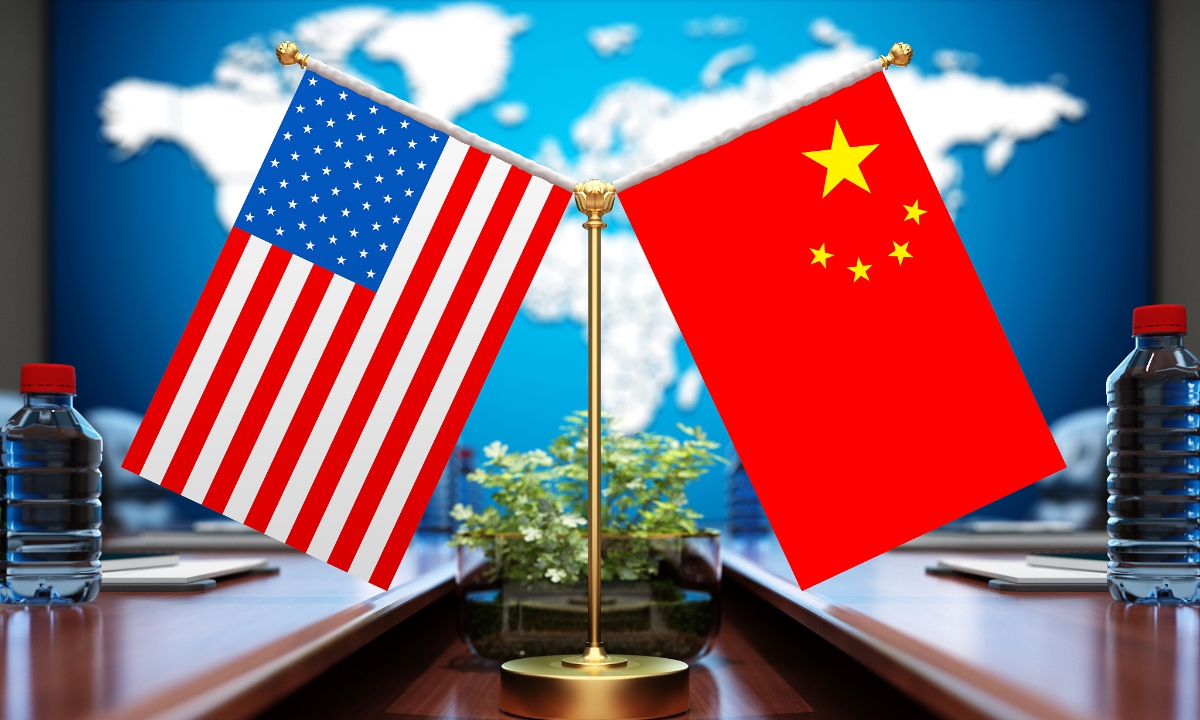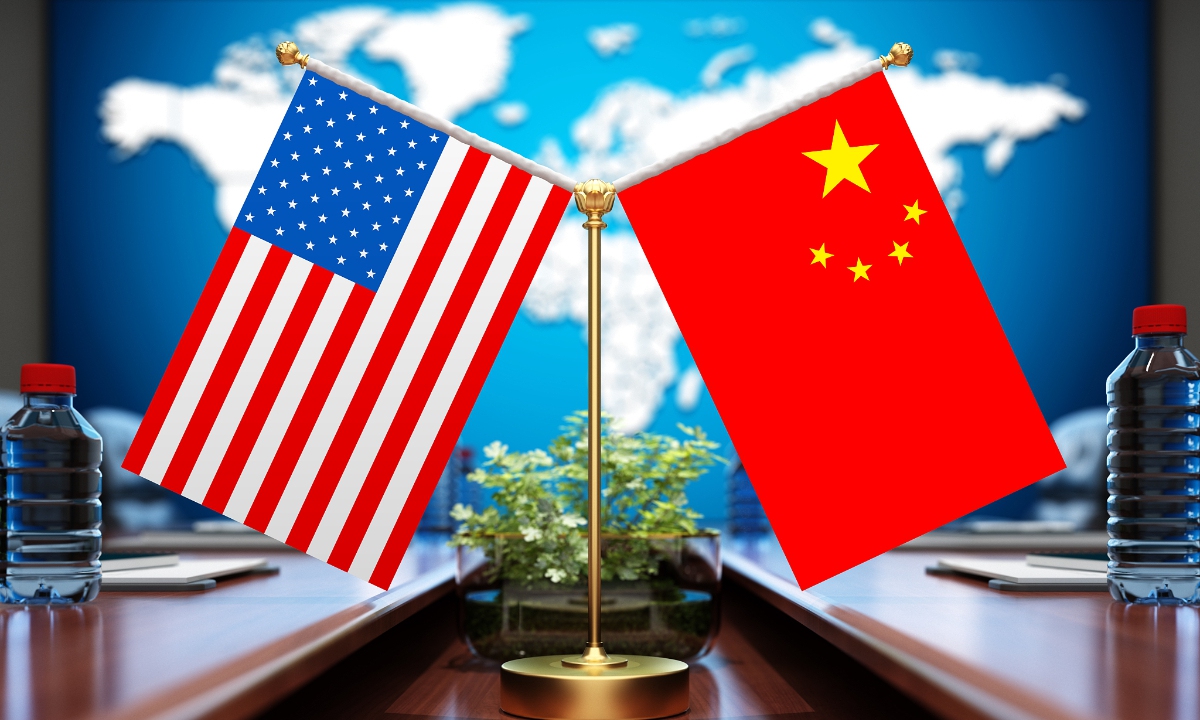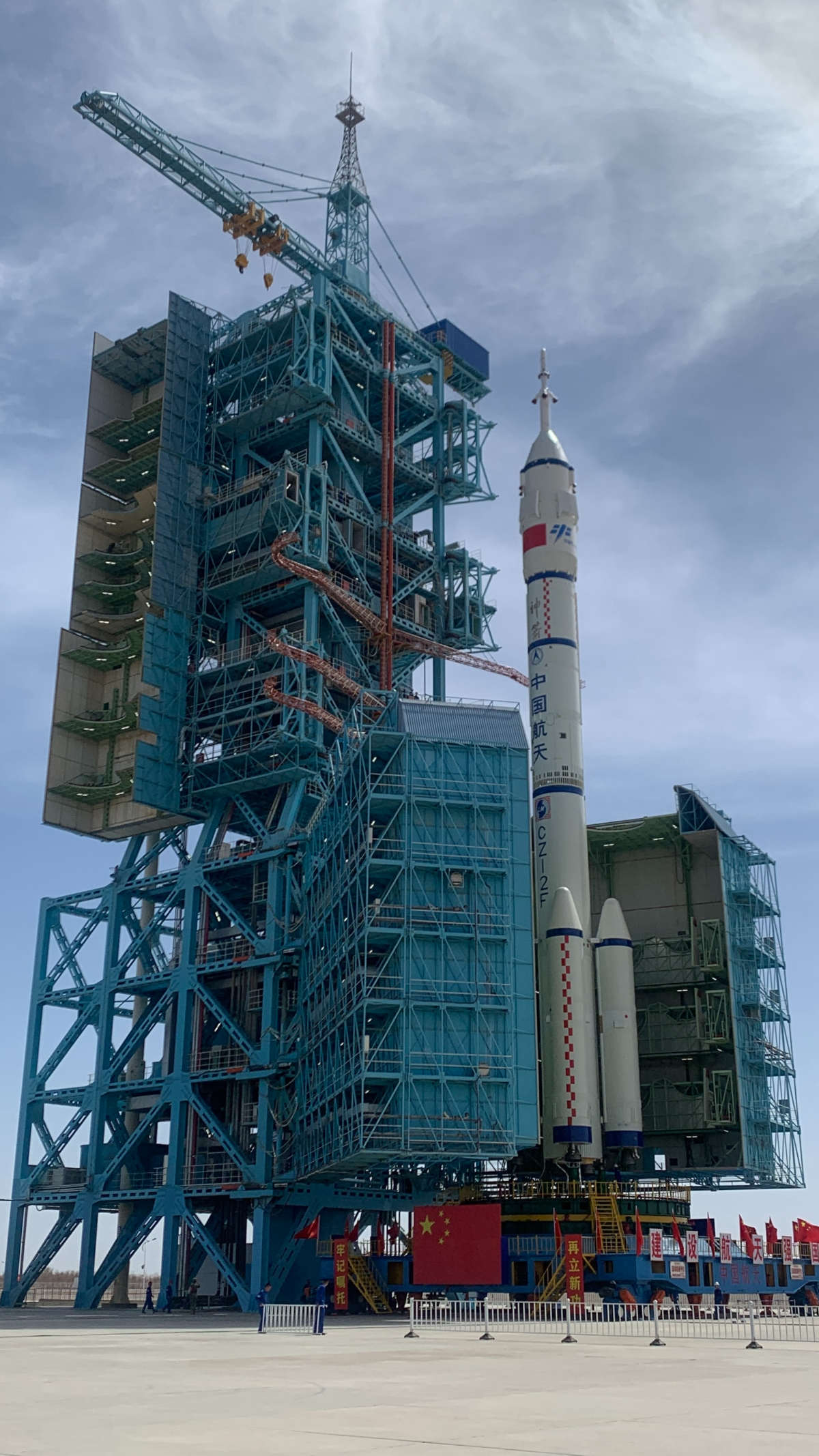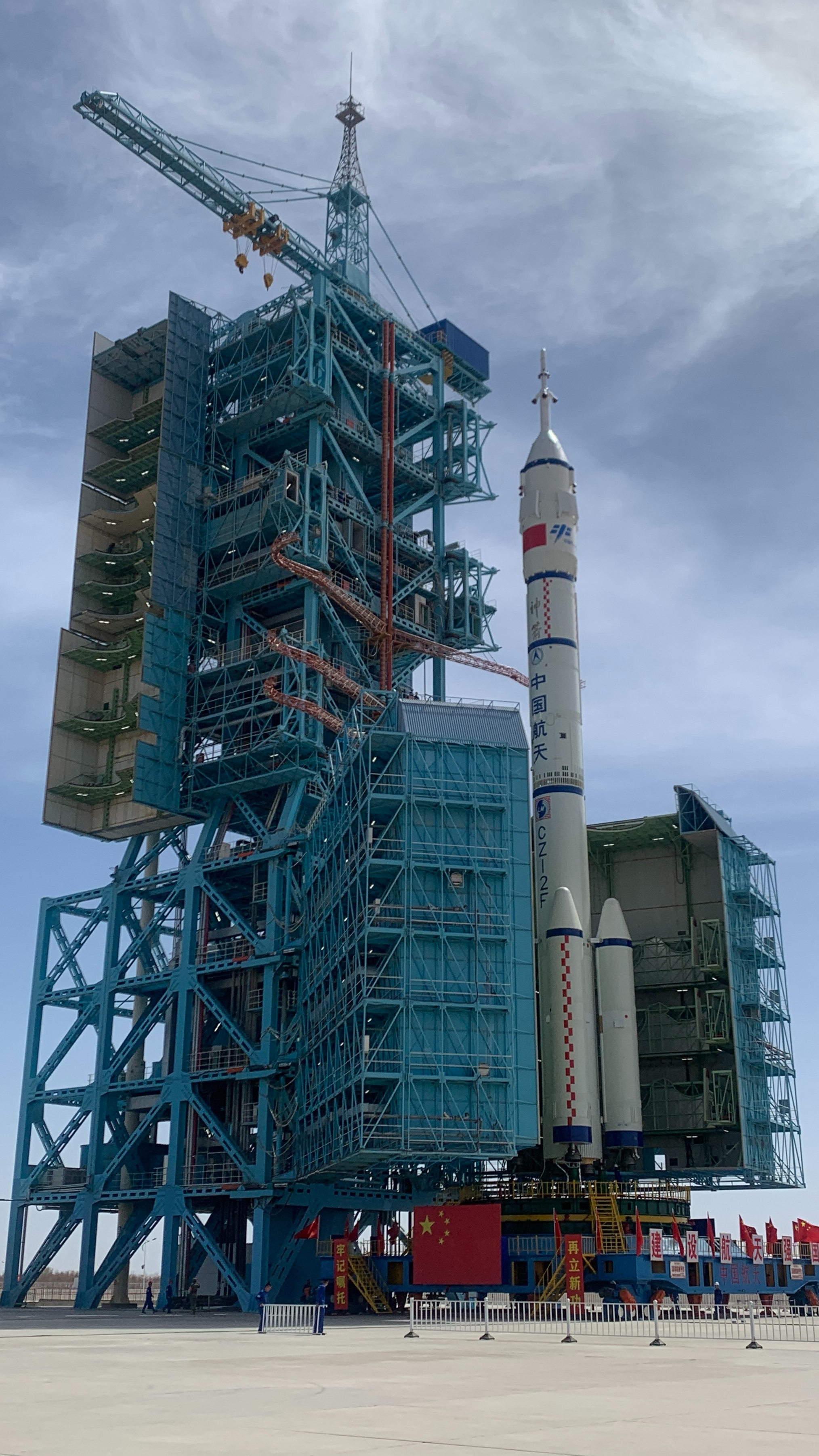
China US Photo:VCG
The economic and financial working groups of China and the US held their fourth meetings in Washington DC on Tuesday, shortly after US Treasury Secretary Janet Yellen wrapped up a high-stakes six-day visit to China last week, which led to new areas of consensus in the economic and financial fields. The meetings come ahead of US Secretary of State Antony Blinken’s reported visit to China.
Observers said the dialogue, adding to a flurry of growing interactions between Chinese and US senior officials since the beginning of the year, showed that both sides attach high importance to bilateral economic ties. It also sent a positive signal on “steady and phased progress” in stabilizing relations between the world’s two largest economies.
As production capacity appeared on the agenda, observers also warned against the US taking a “two-dimensional” approach to China — that is, to maintain the overall stability of bilateral relations yet relentlessly suppress China’s emerging industries. Lately, this has centered on a bizarre narrative that labels Chinese clean technology exports with the “overcapacity” tag.
While dialogue to some extent helps prevent trade tensions from veering into conflicts, the ball is in the US court to stop politicizing economic matters and get relations back to the right track, they stressed.
During the fourth meeting of the economic working group, the two sides engaged in “in-depth, pragmatic and constructive” dialogue on how to implement the consensus reached earlier by leaders of both groups, the macroeconomic situations of both countries and the world, as well as balanced growth, according to a statement on the website of China’s Ministry of Finance on Wednesday.
The Chinese side also expressed concern about US trade and economic restrictions against China and responded further on the issue concerning production capacity. They also discussed arrangements for future communication, and both sides agreed to continue their dialogue.
The meetings took place on the sidelines of the spring meetings of the World Bank and IMF.
With regard to the fourth meeting of the financial working group, the two sides engaged in discussions on topics including each other’s monetary policies and financial stability, cooperation in financial regulation, institutional arrangements in financial markets, anti-money laundering and counter-terrorism financing, and other financial policy topics of mutual concern, according to a statement on the website of the People’s Bank of China (PBC), the country’s central bank.
Some of those topics were the new consensus on balanced growth and financial cooperation reached during Yellen’s visit to China last week. The two sides also agreed at that time on future meeting arrangements for the working group.
Chinese observers said that the fourth meetings are parts of a regular communication mechanism between China and the US, building on the San Francisco vision reached by leaders of both countries last year. It also underscored that both countries put great emphasis on bilateral economic relations, which are consequential not only for each other’s development but also to the global economy.
“As the US presidential election nears, the Biden administration is being hit with many pressures at home and abroad. So he has an urgent need to maintain ‘dynamically stabilized relations’ with China,” Diao Daming, a professor at the Renmin University of China in Beijing, told the Global Times on Wednesday.
While continued discussions signify a positive momentum in bilateral relations, observers pointed out that Washington’s China strategy is “two-dimensional” as the US on the one hand looks to deepen economic ties with China, yet on the other hand, it has been relentlessly cranking up trade tensions to suppress China’s tech industries.
Talks on production capacity appeared in the agenda of the economic working group’s meeting, as Chinese officials intensively criticized the “overcapacity” fallacy hyped by US and EU politicians.
Observers said that the claim of overcapacity is another card Washington recently put on the table to target China, which laid bare its hegemonic mindset as it is nervous about the rise of China’s advantageous industries, from new energy and artificial intelligence, telecommunication to steel.
There are more signs of escalating trade tensions. US President Joe Biden will call for tripling tariffs on Chinese steel and aluminum on Wednesday when he speaks to union members in Pennsylvania, NBC News reported.
Analysts said that the reported move is another practice of targeting Chinese enterprises under the guise of so-called “overcapacity,” though chances could be high that it merely aims to score political points during the election campaign and won’t translate into reality.
Zhou Mi, a senior research fellow at the Chinese Academy of International Trade and Economic Cooperation, told the Global Times that China’s steel and aluminum exports to US were not very large, and the tariff hike, if carried out, would inflict more damage on the US global business credit and local manufacturers than to the China suppliers.
A fair and non-discriminatory perception of China lays the basic framework for further exchanges between the two countries, and only under such premise can the two sides identify more areas of cooperation and resolve controversies, analysts said.
During talks with Federal Chancellor of Germany Olaf Scholz on Tuesday, Chinese Premier Li Qiang stressed that the production capacity issue should start with economic laws and be viewed objectively and dialectically from a market viewpoint and a global perspective.
“Washington must bear in mind that Chinese exports are in line with WTO rules and the global trade pattern is determined by each country’s competitive edge,” Gao Lingyun, an expert at the Chinese Academy of Social Sciences, told the Global Times.
US Trade Representative Katherine Tai will tell lawmakers that the Biden administration is “taking a serious look” at US trade defense tools to deal with threats posed by China’s trade and economic policies, Reuters reported Tuesday.
Gao said that it is unlikely that a new tool will come out, considering the limited aces Washington holds. “It is also ironic that the US barks about ‘punishing’ China, which abides by WTO rules, with a tool that is set to be defiant to trading rules,” Gao added.
 Yuanmingyuan, Beijing. [Photo/VCG]
Yuanmingyuan, Beijing. [Photo/VCG] 

 Visitors experience makeup products at the China International Consumer Products Expo in Haikou, capital of South China’s Hainan province, on April 15, 2024. [Photo/Xinhua]
Visitors experience makeup products at the China International Consumer Products Expo in Haikou, capital of South China’s Hainan province, on April 15, 2024. [Photo/Xinhua] 





 A smartphone with a displayed AMD logo is placed on a computer motherboard, March 6, 2023. /Reuters
A smartphone with a displayed AMD logo is placed on a computer motherboard, March 6, 2023. /Reuters 
 A still taken from CGTN’s “Journeys in Nature” documentary series shows a sea lily floating in the South China Sea.
A still taken from CGTN’s “Journeys in Nature” documentary series shows a sea lily floating in the South China Sea.  A still taken from CGTN’s “Journeys in Nature” documentary series shows garden eels swaying with the current in the South China Sea.
A still taken from CGTN’s “Journeys in Nature” documentary series shows garden eels swaying with the current in the South China Sea.  A still taken from CGTN’s “Journeys in Nature” documentary series shows a crown-of-thorns starfish atop the corals in the South China Sea.
A still taken from CGTN’s “Journeys in Nature” documentary series shows a crown-of-thorns starfish atop the corals in the South China Sea.  A still taken from CGTN’s “Journeys in Nature” documentary series shows a turtle swimming in the South China Sea.
A still taken from CGTN’s “Journeys in Nature” documentary series shows a turtle swimming in the South China Sea.  A still taken from CGTN’s “Journeys in Nature” documentary series shows the coral reefs in the South China Sea.
A still taken from CGTN’s “Journeys in Nature” documentary series shows the coral reefs in the South China Sea.  A still taken from CGTN’s “Journeys in Nature” documentary series shows a school of fish on the coral reef.
A still taken from CGTN’s “Journeys in Nature” documentary series shows a school of fish on the coral reef. 
 A released spotted seal swims in the waters off Dalian, northeast China’s Liaoning Province, April 16, 2024. /CFP
A released spotted seal swims in the waters off Dalian, northeast China’s Liaoning Province, April 16, 2024. /CFP 
 Shenzhou-18 crewed spaceship atop a Long March-2F carrier rocket at the Jiuquan Satellite Launch Center in northwest China, April 17, 2024. /CMG
Shenzhou-18 crewed spaceship atop a Long March-2F carrier rocket at the Jiuquan Satellite Launch Center in northwest China, April 17, 2024. /CMG